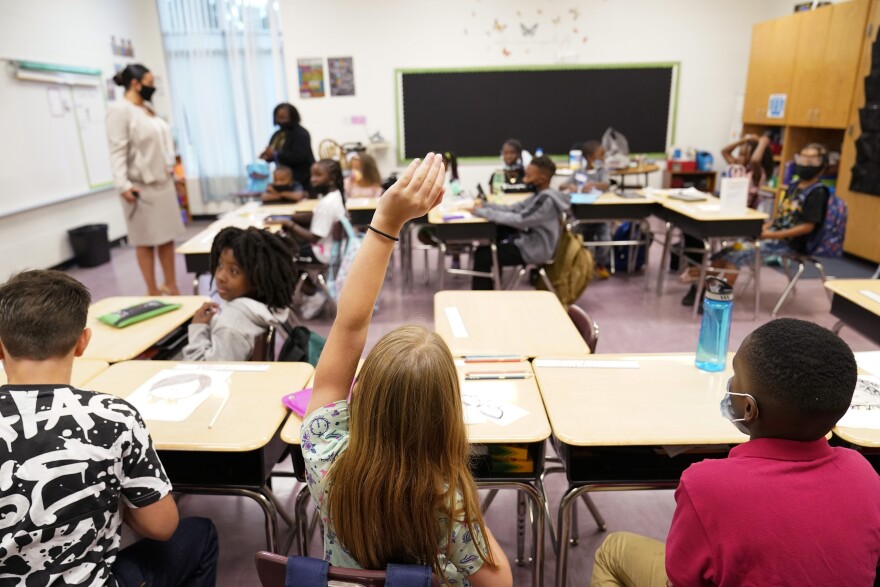ALLENTOWN, Pa. — Earlier this week, state lawmakers met to discuss widespread teacher shortages in Pennsylvania schools. Much of the hearing focused on bringing more people into the teaching profession, and with enrollments in teacher prep programs down significantly, recruitment is an important strategy.
Perhaps just as important, though, is finding a way to hang on to the good teachers we have.
- The state Senate Education Committee met Tuesday about a classroom teacher shortage
- According to testimony, of the 650,000 students who enrolled in college in 2021, only about 20,000 enrolled in teacher preparation programs
- Pennsylvania certifies about 6,000 new educators a year compared to 21,000 in 2010
A decade ago, prep programs were supplying schools with twice as many teachers as were needed. So where did all of these teachers go? Excess supply pushed some into out-of-state teaching positions, and others settled for a different line of work. Many did in fact land that first teaching job in Pennsylvania - and like many new teachers promptly left the workforce. After just three years, one in five new teachers are no longer in the classroom.
Why the turnover?
We need solutions that will make good teachers want to keep teaching. Better wages may be a part of the answer. Pennsylvania teachers are, on average, well compensated, but new teachers are not. Many first-year teachers earn half of what the teacher in the classroom next door is earning to do exactly the same job. Moving away from backloaded salary schedules and allocating more pay to teachers in their first years, when attrition is highest, could move the needle on teacher retention.
Turning schools into great places to work would likely be even more impactful. A mentor of mine at University of Pennsylvania Graduate School of Education, Richard Ingersoll, began studying teacher turnover nationally in the mid-1990s. As he and I have continued this line of research with several colleagues, we have consistently found that working conditions matter a lot for teacher retention, seemingly even more than pay. Specifically, teachers show a strong preference for autonomy in their teaching, and they want a voice in schoolwide policy decisions. Given that teachers tend to choose the career for intrinsic motives, it makes sense that losing a sense of self to bureaucracy would be deflating. Micromanagement can stymie self-efficacy and chase people who truly want to teach out of the profession.
"Transforming the teacher’s workplace will be hard work, and it begins with school leadership."Gregory Collins
Transforming the teacher’s workplace will be hard work, and it begins with school leadership. Principals need to discover which elements of organizational culture will best support their teachers’ growth and job satisfaction. Leadership development programs have long focused on forming principals into instructional leaders. Before they are instructors, though, teachers are people, and they need to be managed and led as people. This requires more listening and understanding and consensus-building.
Demands of principals
Unfortunately, principals may not feel they have time to listen. The popular narrative that there is too much administration in public education may have some truth to it, but excess is rare at the school level. Many principals have 50 to 100 or more employees reporting directly to them. Managing a staff of this size would alone be a challenge, and yet this is only a fraction of the principal’s work.
Overseeing 400 to 4,000 children, monitoring state testing, managing finances, and reading hundreds of e-mails each week from various stakeholders leaves little time for face-to-face interaction with the school resource that matters most to student success: teachers. Only with the knowledge that people management is the top priority and with sufficient resources to make it happen can principals create the great workplaces that we need our schools to be.
Much of this change must happen locally, but the state can support the “schools as great workplaces” push. Unlike test scores and parent concerns, workplace culture tends to be a quiet issue – until it’s too late. Some school districts in Pennsylvania systematically collect teacher feedback on their perceptions of the work environment. Many do not.
Taking the pulse
Pennsylvania could promote more favorable conditions for teachers through a statewide workplace survey. In North Carolina, which runs such a survey biannually, they make public the results for all schools. Pennsylvania could follow this lead, or they could privately provide the data to local school boards for use in their decision making. We could also begin to recognize and reward education leaders who excel in making their schools great places to work, thereby strengthening the profession for the long run.
As we face today’s challenge of teaching vacancies, we will indeed need to open the supply spigot and recruit more teachers into the profession.
But we must also fix the leak in our bucket. Let’s make schools into great workplaces so great teachers choose to stay, educating the children of Pennsylvania for years to come.
Gregory Collins is an assistant professor of business and an education organization researcher at Muhlenberg College. He recently co-authored “Trends in the Recruitment, Employment, and Retention of Teachers from Underrepresented Racial-Ethnic Groups.”

